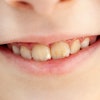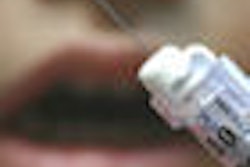Dear Restoratives Insider,
Given the alarming rise in dental-related pediatric sedation deaths in recent years, are we on the verge of a sea change in the way anesthesiologists view the safety of sedating young patients? A number of recent animal studies have suggested that cognitive and behavior problems could surface in patients who are anesthetized at a young age, according to an article in the New England Journal of Medicine.
Gathering conclusive data will be expensive and time-consuming, but some anesthesiologists are already shifting their opinions about the risk profile of general anesthesia in pediatric patients. Read more in our latest Restoratives Insider Exclusive.
In other Restoratives Community news, we came away from the recent International Association for Dental Research (IADR) meeting with a plethora of new research to report. Among our findings:
Dentsply researchers compared five remineralization products to see which of them released the most calcium. Find out how they stacked up against one another here.
Another product comparison sought to determine which new composite resins on the market placed the lowest amount of residual strain on a restored tooth. Few studies have tried to measure stress and shrinkage before; learn what the researchers found and the new model they created for evaluating strain here.
Another research team conducted a four-year clinical trial of N'Durance, a nanohybrid composite developed by Septodont for anterior restorations. Read their mostly positive findings here.
Septodont was in the news for another reason during the IADR meeting, following the announcement that the company had acquired Novalar's OraVerse product line, the first local anesthesia reversal agent to gain FDA approval. Read more.
A number of newer restoratives technologies also are making their presence known. DrBicuspid.com recently spotlighted these two products:
The Self-Adjusting File (SAF) developed by ReDent Nova. The days of reaching for an array of hand files during a root canal may be over.
The makers of Physics Forceps, GoldenMisch, are more interested in extractions than root canals. With their product, they hope that dentists can take the trauma out of the procedure. The concept behind the forceps is explained here.
In international news, the European Commission appears ready to make recommendations that could lead to the phasing out of dental amalgam usage in several European countries. Using them in most European Union nations is currently considered safe, but for how long?
Finally, Dr. Gordon Christensen had a few choice words to describe the state of U.S. dental implant rates during a panel discussion he hosted at the annual Midwinter Meeting in Chicago last month. Find out what he and his colleagues had to say here.



















